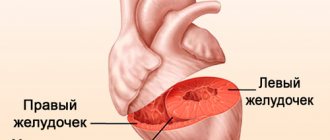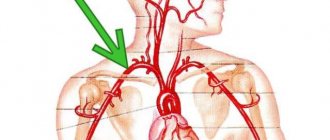Causes of brown discharge
Why does the color of sputum change?
Brown mucus is a criterion for many diseases. Discharge in the morning appears due to the fact that the muscles of the sternum contract, trying to eliminate everything on their own. Rusty sputum occurs in patients with a disease caused by an infection. Rusty-colored sputum is considered a reason for concern and a visit to the doctor. This tone is often observed with pneumonia. Red sputum indicates the presence of blood, but unlike pinkish mucus there is much more of it. In this case, the mucus radically changes color with the formation of veins. Brown sputum occurs due to inflammation (usually the lungs).
Brown sputum when coughing indicates necrosis (death) of the lung tissue. Thick brown sputum with mucus is characteristic of diseases that are associated with damage to the respiratory system by various infections. This also includes polluted air and tobacco smoking. If we consider cough from this point of view, then it is an absolutely natural phenomenon, because coughing when smoking appears as a cleansing function (removing mucus from the respiratory system). In any case, when mucus is released, it is necessary to consult a pulmonologist. Pharmaceutical substances are prescribed depending on the personal characteristics of the body.
What to do if you produce phlegm without coughing
If sputum is produced for a long time, consult a physician or pulmonologist. During the interview, the doctor will clarify:
- how long ago the symptom appeared;
- presence of bad habits and occupational hazards;
- tendency to allergic reactions.
To determine the cause of expectoration of mucus without coughing, a diagnosis is carried out:
- physical examination - examination of the throat, listening to the lungs;
- endoscopic examinations – broncho-, rhino- and pharyngoscopy;
- hardware methods - MRI of the chest, radiography of the lungs, ultrasound of the pleural cavity;
- laboratory tests - microscopic examination of sputum, general blood test, allergy tests.
To exclude helminthiasis, fungal infection of the lungs and syphilis, an enzyme-linked immunosorbent test is prescribed to determine antibodies to the pathogen. If tuberculosis is suspected, the quantiferon test and the Mantoux test are recommended.
Treatment options depend on the cause of excessive mucus production. Conservative therapy involves taking medications, physical procedures - magnetic therapy, inhalations, chest massage, UHF therapy. The basis of pharmacotherapy is:
- antibiotics – Doxycycline, Amoxiclav, Augmentin;
- anthelmintics – Vermox, Trichlorophen, Piperazine;
- anti-tuberculosis drugs - Pyrazinamide, Ethionamide, Isoniazid;
- antifungal drugs - Itraconazole, Fluconazole, Isavuconazole.
There are several dozen diseases in which sputum is expelled without coughing. Some of them do not pose a threat to health, while others are fraught with dangerous complications. Therefore, if such a symptom appears, you should not postpone a visit to a therapist or pulmonologist.
source
Is there a danger if when you cough, your sputum contains blood?
The presence of isolated bloody inclusions does not always mean that the pathology poses a threat to health.
Sometimes traces of blood can cause colds, the symptom of which is a hacking cough. In this case, a person experiences a violation of the integrity of small capillaries, they rupture, and a small amount of blood is excreted with the mucous secretion of the bronchi.
Also, this situation can lead to prolonged and excessive physical activity.
Sputum with blood appears when the degree of blood clotting is low, or when there is therapy with drugs that reduce its viscosity.
In these cases, these symptoms do not cause any particular concern and go away on their own. But besides this, there are many reasons why blood in sputum is a sign of serious pathology. Any case of sputum with bloody inclusions requires contacting a medical facility.
Symptoms
Phlegm is a mucous discharge that is coughed out of the body during a coughing attack. This is a natural process that is needed to cleanse the body. Normally, mucus contains the secretion of glands that are located in the walls of the bronchi. In addition, it often contains dust particles, microorganisms or pus. If there is a deviation from the norm, a secretion is released, in which veins or blood clots are present.
If the patient has characteristic symptoms, coughing up blood constantly manifests itself, then we are talking about a serious pathology. The following signs indicate that you need to see a doctor urgently:
- blood from the nasopharynx;
- a sharp decrease in body weight;
- steady increase in temperature;
- chest pain;
- difficulty breathing, shortness of breath;
- night sweats;
- fatigue, weakness;
- decreased appetite or complete absence of it.
The listed symptoms in combination with a bleeding throat indicate a number of diseases: tuberculosis, lung cancer, bronchitis, pneumonia and helminthiasis (damage to the body by parasites).
With a cough
Blood streaks in sputum when coughing often appear not from the respiratory tract, but from the intestines or stomach. If there is blood coming from the throat, it can be difficult to distinguish these types of discharge, but experts identify several signs by which this can be done:
- You may feel a slight tingling sensation in your throat before you cough;
- the blood released during coughing is foamy and has a bright scarlet hue;
- coughing up blood is accompanied by nausea and discomfort in the stomach;
- The consistency of expectorated blood resembles thick paint.
If a cough means a bacterial pathology, then purulent discharge appears along with blood streaks in the sputum during bronchitis and other diseases. It can be white, yellow or green. Blood often appears from the nasopharynx when coughing up phlegm from the throat. Doctors explain this by saying that the airways are connected, so the mucus drains along with the blood from the nasopharynx and throat.
No cough
In some cases, phlegm accumulates in the throat, but is not accompanied by coughing impulses. This can occur with viral diseases, tobacco abuse and gastrointestinal diseases, in which the contents of the stomach are thrown back into the esophagus. If you observe blood from the throat when coughing without coughing, the cause may be severe infectious or inflammatory diseases, as well as malignant tumors.
If the throat bleeds, pathological processes can develop in the larynx, pharynx, trachea, bronchus and lungs. Most often these are oncological diseases, but in some cases we are talking about inflammation. Sputum with blood without coughing is thick and has a strong, offensive odor.
Classification of causes
Hemoptysis is a process that involves directly coughing up blood or bloody sputum from the respiratory tract. Blood is released from the bronchial vessels under the influence of high pressure. This occurs with severe inflammation, neoplasms in the vascular area, or increased pressure in the left atrium.
If a patient is diagnosed with hemoptysis, the reasons may be as follows:
- Inflammation of the bronchi and irreversible expansion of some areas of this organ, tuberculosis and malignant neoplasms in the lungs, pneumonia of bacterial origin. The listed diseases become the most common cause of hemoptysis.
- Left ventricular failure, pulmonary thromboembolism, lung injury. This is a list of reasons that are less common.
- Hemorrhagic diathesis, aspergillosis, connective tissue lesions, systemic lupus erythematosus, granulomatous vasculitis, damage to the body by parasites. These factors can lead to hemoptysis, but this occurs much less frequently.
Important information: How many days does bleeding begin after Postinor and how to stop the bleeding
The causes of hemoptysis include taking a number of medications. Most often these are drugs from the group of anticoagulants, fibrinolytics, acetylsalicylic acid and cocaine.
True hemoptysis
If a patient coughs up blood, the causes of the pathology may be different. In this regard, doctors distinguish between true and false hemoptysis. In the first case, blood is released from the respiratory tract in pure form or in the form of streaks. This symptom often occurs in people over 45 years of age.
False hemoptysis
If blood comes out of the throat due to false hemoptysis, diseases of the gastrointestinal tract often become a factor in the development of pathology. When coughing, sputum with blood is not released from the respiratory tract, but from the intestines or stomach. It may be brown, have a foamy consistency and a sour odor.
Causes of phlegm in the throat
The human respiratory organs are designed in such a way that they are capable of self-cleaning from the smallest particles of dust, microorganisms and other substances that enter the body along with the inhaled air. Special cilia that make oscillatory movements from bottom to top, and goblet cells that produce mucus are responsible for this.
They line the mucous membranes of the bronchi. Therefore, even in completely healthy people, sputum accumulates and is separated every day, but its volume is so small that a person does not even notice how regularly he swallows mucus removed into the pharynx from the respiratory system.
But sometimes situations arise when phlegm is constantly felt in the throat. Where does it come from in such cases? The main reason for this is either increased production of tracheobronchial secretions or a violation of its excretion. This is typical for:
Sticky phlegm in the throat: causes. How to get rid of
How to remove phlegm from the throat? This issue may bother the patient for a long time or arise suddenly. If this symptom is not accompanied by fever or pain...
However, the accumulation of tracheobronchial secretions in the throat can also be observed against the background of complete health, for example, when consuming alcoholic beverages, spicy, cold or, conversely, hot foods, that is, foods that irritate the mucous membranes.
Diagnostic clue: sputum in the morning
If a person experiences the sensation of a lump of mucus in the throat exclusively in the morning, first of all he should suspect the presence of:
- reflux esophagitis;
- chronic sinusitis;
- cardiopathologies;
- adenoiditis.
This can also be the result of banal dry air in a room where a person spends a lot of time, for example in an office or bedroom.
Why might a child have
A child coughs up blood for the same reasons as an adult; even passive inhalation of tobacco smoke can trigger the cough symptoms characteristic of a smoker in a child.
But children are active and curious, so the following factors should be added to the list of diseases listed above:
- Bruised nose. A child who has been hit may not have external signs of nosebleeds due to the fact that the damaged vessel is located on the back surface of the nasal passages. The flow of blood into the respiratory tract causes the appearance of expectoration of mucus with bloody streaks. The situation is complicated by the fact that children do not always tell their parents about falls or nose bruises.
- Inhalation of foreign objects. Small children often put buttons, beads, and toy parts in their noses or in their mouths. With a sharp inhalation, a small object enters the bronchial tree from the nasopharynx or oropharynx, causing microtrauma and irritation of the bronchial mucosa. In this case, a child does not cough up blood immediately, but 2-3 days after a foreign body enters the respiratory tract.
- Inflammation in the nose, accompanied by dry nasal mucosa. The disease is accompanied by the formation of crusts that cause discomfort when inhaling air. Straining when blowing your nose, in an attempt to get rid of the irritating element, provokes vascular bleeding, which can manifest itself by external signs (nasal hemorrhage) or occur hidden, and the blood exudate accumulated in the respiratory tract will be excreted with sputum.
If in an adult one-time hemoptysis is relatively safe, then in children such pathological manifestations should not be ignored. This can be either a relatively harmless damage to the capillary wall of the respiratory organs due to overexertion, or the first warning sign of a serious illness, or it can be an equally dangerous consequence of inhaling a foreign body.
Diseases characterized by the appearance of a dangerous symptom
There are more than a dozen pathologies that are accompanied by blood in the sputum during expectoration. Among them we will highlight the common ones and then the rare ones. So, what ailments are we talking about?
Traumatic lesions of the respiratory system (lungs, bronchi, trachea).
In the structure of this cause, the most common are chemical damage and destruction of small capillaries during intense coughing. In the second case, there is no danger to life and health, capillary bleeding stops on its own.
We can also talk about gunshot, knife and shrapnel wounds due to rib fractures. In such situations, pneumothorax becomes a frequent complication: the penetration of atmospheric air into the structures of the chest.
The condition is characterized by intense pain at the site of injury, breathing problems (the patient can inhale, but is unable to exhale), a drop in blood pressure, and the presence of blood in the discharge when coughing.
A common infectious disease caused by the penetration of the microbacterium tuberculosis (the so-called Koch bacillus) into the respiratory tract. The pathology is characterized by an intense, “clogging” cough, which intensifies during daylight hours and weakens somewhat at night.
In the first month from the onset of the disease, the cough is dry and unproductive. Body temperature rises to 37.5-38 degrees Celsius. Throughout the course of the disease, febrile and subfebrile thermometer values are maintained.
Next, blood begins to be released when coughing, and in the structure of the sputum, not only hematological fluid is observed, but also pus of a yellow or greenish tint.
Patients note general weakness, a constant desire to sleep, decreased performance, and hair loss. In the final stages, when coughing, blood is intensively expectorated (in clots), which leads to the death of the patient.
Some types of helminths settle in the lungs. They destroy lung tissue, causing life-threatening and health-threatening symptoms. Patients are worried about: cough, fever, cough mixed with blood, weakness, intense allergic reactions even to substances to which there was no previous immune response, bronchospasms.
Typical symptoms include hemoptysis (at the first stage), weakness, pain when breathing, bronchospasms, low-grade fever (up to 38 degrees), increased sweating, a sharp change in body weight downward, and others.
It is necessary to recognize the neoplastic process as early as possible in order to prescribe the correct treatment and prevent metastasis of the main tumor. The most intense blood loss is observed when the malignant tumor is localized in the central part of the lung.
Blood in sputum during expectoration may be due to fungal diseases of the pulmonary structures.
In this situation, in the early stages, the intensity of bleeding is minimal; later, ruptures of large vessels and the development of shock, as well as bronchial obstruction, are possible.
Adenomatosis of the bronchi and lungs.
Adenoma is considered a benign tumor. But its “benign quality” lies only in the absence of metastasis. Otherwise, a characteristic compression effect is observed with the development of all the same manifestations as in cancer of the respiratory system. Urgent treatment is required.
Bronchiectasis is characterized by the appearance of vesicular alveolar expansions in the bronchial cavity. Such blisters are filled with serous fluid, blood and pus. With intense coughing, the ectases rupture and their contents are poured out, evacuated from the body. Hence the presence of blood in sputum without fever. Hyperthermia is observed in very rare cases.
It's pneumonia. Accompanied by an increase in body temperature to febrile levels (38.1-39°C), chest pain, shortness of breath and suffocation.
Ulcerative diseases of the digestive tract are accompanied by internal bleeding. The cough is always dry, the resulting blood is dark in color, and is expectorated in the form of clots, without sputum.
The list of reasons is long, but it is not exhaustive.
When and which doctor to go to
As soon as you notice you are coughing up blood, contact your doctor immediately. The specialist will examine you, study your medical history and listen to your complaints. Depending on the information received by the doctor, you may be referred to an oncologist, pulmonologist, phthisiatrician, allergist, or infectious disease specialist. These are specialists who treat cancer, pathologies of the lower respiratory tract, tuberculosis, allergies, and infectious diseases.
Important information: What to do when a vessel (capillary) or vein in the leg bursts and how to treat it
Remember that self-medication in this case is unacceptable. People experiencing throat bleeding do not always treat the symptom responsibly, which is a fatal mistake. This sign may signal a malignant tumor that cannot be cured at home using tinctures and folk remedies.
Diagnosis and treatment
Coughing up blood can be caused by a number of illnesses. In order to find out the cause of this symptom, the patient must undergo the following procedures:
- Initial examination. The doctor will examine the chest and listen to breathing using a stethoscope - a special device designed to listen to sounds from the heart, blood vessels, lungs and bronchi.
- Blood and sputum analysis. A specialist takes biological material and examines it in a laboratory setting. The test results show the nature of the inflammation and help identify the pathogen (if the infectious nature of the disease is suspected).
- Chest X-ray. This is a non-invasive test that uses X-rays. With their help, you can identify the shape, position, tone and condition of the mucous membrane of the internal organs.
- CT scan. This is another method based on X-ray radiation. In the images obtained during a CT scan, the doctor can see the internal organs, blood vessels and skeletal system from different angles. Using this method, the doctor can determine why blood is released when coughing.
- Spirometry. This test is designed to determine the patency of the airways and how much the lungs are able to expand on their own.
- Bronchoprovocation test. First, the patient inhales methacholine or histamine, after which he undergoes spirometry. Then he needs to inhale the drug again. The results before and after inhalation are compared. The test helps identify bronchospasm that occurs as a reaction to an allergen.
If necessary, several more procedures are performed to help understand why the patient is bleeding from the throat. These include: assessment of external respiration, study of the gas composition of the blood, examination of the bronchial mucosa from the inside, study of blood vessels and consultation with a pulmonologist.
For hemoptysis, treatment begins with treatment of the underlying disease (pneumonia, tuberculosis, cancer, helminthiasis, etc.). In addition, the patient is prescribed the following:
- If hemoptysis in the morning appears as a result of a dry cough, and sputum is not separated, the patient is prescribed mucolytic drugs. This is a group of drugs that thin mucus and promote its expectoration with blood in the morning and at other times of the day.
- Antitussive drugs. Prescribed for an exhausting cough that does not stop for a long time. They suppress cough impulses, which helps alleviate the patient’s condition.
- Hemostatic drugs. Bleeding from the throat indicates that blood clotting is reduced and blood vessels are weakened. To correct this situation, the doctor prescribes drugs designed to improve blood properties and protect blood vessels.
To finally get rid of expectorated blood in sputum in the morning, the listed drugs are not enough. Therapy is a long and complex process of treating the patient, which in some cases can last for years. This applies to diseases such as tuberculosis and lung cancer.
Diseases with sputum production
A specialist can help in this matter, so you need to contact the clinic. After all, the appearance of sputum and its shade can tell a lot about the presence of a disease or pathology in the human body. Therefore, medication therapy and the use of traditional medicine can be prescribed by a doctor, based on the symptoms and identifying the disease.
People who smoke a lot may notice that brown mucus forms in the throat in the morning and is coughed up. Due to inhalation of harmful cigarette smoke, the size of the discharge increases. In addition, such a habit is harmful to health, since a colossal number of harmful substances enter the bronchi along with smoke. In this case, the body tries to remove all elements hazardous to health.
Please note that even a common cold causes expectoration
Phlegm is mucus from disease processes in the airways and lungs that is expelled when coughing. However, if complications are present in the body, the normal clear mucus may include pus. If parents notice such discharge in a child, it is necessary not to delay a visit to the doctor, because such a symptom is dangerous for the child. When a patient’s doctor discovers the discharge of brown sputum, we can talk about bronchitis.
Sputum mixed with brown spots appears due to external conditions: dust, paints or other irritants of the mucous membrane. Mucus in tuberculosis is of a special nature - the patient has bloody streaks, purulent discharge with mucus. Mucus in pneumonia is often mixed with saliva and can include bacteria, cellular detritus, cells of the immune system, dust formation, and blood elements. The tone of the discharge depends on the disease process and its stage. Thus, sputum presents a huge variety of colors, such as white, yellow, grayish, greenish, pinkish, scarlet, brown, dark, rust color. Each shade of which indicates a specific disease of the respiratory system.
Symptoms of bronchitis
This is a disease of the respiratory tract that causes inflammation and swelling of the bronchi, which can occur in acute or chronic form. It is a very common cause of hemoptysis, resulting from a repeated, prolonged and painful cough, which constantly irritates and ultimately injures and destroys the mucous membrane of the respiratory tract (bronchi and bronchioles).
Heoptysis in bronchitis is usually characterized by sparse streaks and is often associated with purulent sputum and copious, opaque, yellowish-white discharge. Sometimes there is mild fever and wheezing, which can be detected with a stethoscope.
Typically, sputum is examined under a microscope to find the pathogenic culprit of the disease. Chest X-rays are often normal in acute forms of the disease. In the chronic subtype of the disease, an increase in the pattern of the bronchial tree is detected, and blood is released profusely.
As soon as at least one alarming symptom of the disease appears, it is necessary to urgently undergo examination.
The patient is prescribed cough suppressants (suppressive drugs) and antibiotics. Treatment for acute bronchitis may include inhaled albuterol, which is delivered into the airways through a nebulizer (a device that produces an aerosol and is inhaled for therapeutic purposes). For acute or chronic forms of the disease, inhaled steroids may also be useful.
Worsening of the condition usually requires antibiotics. Cough medications, which can get worse at night, are great for suppressing it. The latter persists for more than two weeks in 25% of patients.
www.healthcommunities.com
www.activebeat.com
What does coughing up blood mean?
And if a small amount of light “fresh” blood may be due to damage to small blood vessels due to increased pressure during coughing, then dark red clots or streaks may appear with such dangerous diseases as tuberculosis or lung cancer.
Coughing up blood or hemoptysis, from a medical point of view, is the release of any number of red blood cells from the bronchi or lungs. Blood in sputum appears in bronchitis, pneumonia, bronchiectasis, tuberculosis and other life-threatening conditions, so the patient is advised to immediately begin an examination to identify the cause of hemoptysis.
Causes of pathology
Before starting examination and treatment, you need to make sure that the blood is coming from the respiratory system, and not from the sinuses, stomach or mouth. Sometimes it can be quite difficult to pinpoint the location of bleeding. Pulmonary hemorrhages are accompanied by pain and discomfort in the chest, pink in color, sputum appears at cough points, it is light, “foamy”, “bubbly”, it should not contain impurities or an unpleasant odor.
The blood coming from the stomach is darker, the cough is accompanied by vomiting and abdominal pain, and particles of food and other gastric contents are released along with phlegm. An examination by a dentist and an ENT doctor helps diagnose diseases of the oral cavity or nasopharynx.
The most common causes of hemoptysis
- Bronchitis and bronchiectasis - inflammation of the bronchi and bronchiectasis most often, in 60-70% of cases, becomes the cause of pathology. In acute or chronic bronchitis, the patient suffers from strong, frequent coughing attacks with thick sputum in large quantities, sometimes it may contain blood impurities. The cough intensifies and veins appear in the morning.
- Pneumonia and lung abscess - the appearance of “rusty” sputum or fresh, bright scarlet blood when coughing, high body temperature, chest pain, and general deterioration of the condition are characteristic of inflammatory processes in the lungs. With reduced immunity or a general weakening of the body, a serious complication may occur after pneumonia - a lung abscess, that is, the appearance in the lung tissue of a cavity filled with pus and sputum. An abscess is characterized by a sharp increase in body temperature, severe pain in the chest and the release of a large amount of purulent or greenish sputum with an unpleasant odor and streaks of blood when coughing. Most often, the emptying of the abscess occurs in the morning - the patient begins to have a strong cough, expectorates a mouthful of sputum, after which noticeable relief occurs and the body temperature decreases.
- Tracheitis, laryngitis, tonsillitis - with these diseases, patients experience a sore throat, a change in voice and a cough with scanty sputum and a small amount of blood.
- Tuberculosis - with tuberculosis, the patient has a cough for a long time with a slight secretion of sputum, foamy, often pink or with red streaks, the cough worsens in the morning, and constant chills, increased sweating and weakness are also noted.
- Lung cancer - cancer of internal organs may not manifest itself clinically for a long time, then the patient may periodically experience coughing attacks, with blood in the sputum in the form of streaks or clots. The patient feels unwell, especially in the morning, feels a burning sensation in the chest, cannot cough up or spits out clots, a deterioration in appetite and sudden weight loss are also characteristic.
- Cardiovascular diseases - with decompensation of cardiovascular diseases, the patient develops pulmonary hypertension, blood stagnation in the lungs and blood appears in the sputum when coughing, shortness of breath and a feeling of lack of air.
- Pulmonary hemorrhage is a life-threatening condition for the patient, characterized by heavy bleeding when coughing; if the patient suddenly develops chest pain, shortness of breath and coughing with bloody sputum in large quantities, he must be urgently hospitalized.
- Other diseases - streaks of blood in the sputum can be a symptom of such pathological conditions as pulmonary echinococcosis, hemorrhagic purpura, foreign bodies in the lungs, bruise or fracture of the ribs, pulmonary vasculitis or idiopathic pulmonary hemosiderosis.
Treatment of the disease depends on its etiology, pneumonia and abscess are treated with antibiotics, tumors are most often removed surgically, and tuberculosis and other specific diseases need to be treated by specialized specialists - TB specialists, cardiologists or pulmonologists.
ingalin.ru>
What kind of disease is this
Many patients who experience this symptom do not understand why there is blood coming from the throat and wonder what it means. Doctors say that there are a number of diseases behind this sign, and when diagnosing it is important to take into account the accompanying symptoms.
Tuberculosis
Tuberculosis is a widespread infectious disease caused by Koch's bacillus. Most often, this pathology affects the lungs, causing the patient to cough up sputum containing blood. Doctors identify the following causes of tuberculosis:
- dependence on alcoholic beverages, drugs and tobacco products;
- abnormalities in the structure of the respiratory system;
- chronic inflammatory processes in the respiratory system (including a history of acute diseases);
- the presence of chronic pathologies in other organs and tissues;
- disorders of the endocrine system (including diabetes mellitus);
- unbalanced diet, in which the body does not receive enough vitamins and microelements;
- low stress resistance, depression;
- pregnancy and breastfeeding;
- unfavorable living or working conditions.
The listed risk factors lead to the fact that the patient’s immunity is weakened, which makes the likelihood of getting sick higher.
At the initial stage of the disease there are no symptoms. However, then the person’s health deteriorates, the throat may bleed, uncontrollable irritability appears, and body weight sharply decreases. Night sweats are another sign that helps recognize the development of the disease. However, the same symptom occurs in cancer, so the patient must undergo additional diagnostic procedures.
Tuberculosis is a serious disease that is treated on an outpatient basis. A person is placed in a medical facility, sent to a number of diagnostic procedures and prescribed medications for complex treatment. These are anti-tuberculosis drugs and drugs designed to enhance immunity.
Worm infestation
Helminthiasis is a condition caused by the penetration of parasitic organisms into the body. The causative agents of the pathology can be roundworms, pinworms, hookworms, whipworms, and toxocaras. If the patient is bleeding from the throat, the cause may be infection with the listed microorganisms.
The cause of helminthic infestation is non-compliance with personal hygiene rules and the patient’s weakened immunity. Infection occurs through dirty food and water. A percutaneous route of infection is also possible, when microorganisms penetrate inside through damaged skin. However, most often the cause of the disease is carelessness in handling food. Worms become infected by people who do not wash their hands often enough, do not heat-treat food, and drink low-quality water that is not subject to boiling processes.
To avoid infection, doctors recommend heat-treating foods and drinking boiled water. Experts advise not to purchase products of questionable quality, as this increases the risk of infection.
An infected person may bleed from the nose and throat. In addition to streaks of blood in the sputum, which are a sign of helminthiasis, there are other symptoms:
- digestive disorders, gas formation, changes in stool;
- inflammation and pain in the joints;
- skin rashes, burning and itching;
- decreased hemoglobin level;
- deterioration of skin and hair condition;
- weakness and increased fatigue;
- unstable emotional state, constant irritability;
- sleep disorders: insomnia, drooling and grinding teeth during sleep, increased anxiety.
Another sign that will help recognize helminthic infestation is increased sensitivity to allergens. If a person has not previously suffered from allergic reactions and other manifestations of weakened immunity, then when infected with worms, blood appears and allergies to dust, pollen, and animal hair appear.
Important information: Can a polyp bleed during pregnancy and what to do when it bleeds
Pneumonia
Pneumonia is a unilateral or bilateral inflammation of the lungs, in which sputum streaked with blood may be observed. This is an acute inflammatory disease that can be caused by a whole group of pathogens:
- gram-positive microorganisms: pneumococci, staphylococci and streptococci;
- influenza, herpes and parainfluenza viruses, adenoviruses and fungal microorganisms;
- mycoplasmas;
- gram-negative microorganisms: Haemophilus influenzae and Escherichia coli, Enterobacteriaceae, Legionella.
Other factors leading to pneumonia: ingestion of toxic substances and allergens, ionizing radiation, chest injuries.
Patients with pneumonia produce sputum when they cough; in severe cases it may be streaked with blood. The disease is characterized by a persistent increase in temperature, fever, sweating, and weakness. Bleeding from the throat is rare. Most often this happens in advanced stages of the disease, when treatment was provided untimely or not adequately.
Cancer
Among the most common causes leading to hemoptysis, doctors identify a cancerous tumor in the lung area. This is a malignant neoplasm that begins to form in the pulmonary parenchyma or bronchial tissues. It is a cluster of mutated cells that divide uncontrollably and, in the absence of treatment, metastasize to other internal organs.
Factors that increase the risk of developing lung cancer are: abuse of tobacco products, unfavorable environment, exposure to radiation.
A malignant tumor can be recognized by a number of symptoms:
- steady increase in temperature;
- chest pain;
- night sweats;
- hoarseness of voice;
- coughing up blood;
- violation of lymphatic and venous outflow from the upper body;
- swelling of veins in the chest, neck and arms;
- swelling and redness of the face.
In severe cases, impaired consciousness and visual disturbances may occur. Patients have a bleeding throat and often have a headache.
Surgical intervention on the organs of the respiratory structures
Surgical intervention is required in cases where the disease is diagnosed at an advanced stage. Most often, this treatment method is prescribed to patients with a malignant tumor. During the rehabilitation period, the patient may bleed from the throat. The cause of hemoptysis in this case lies in non-compliance with the specialist’s recommendations.
In more rare cases, patients cough up sputum containing blood and pus. The cause of this symptom is the addition of a bacterial infection. In this case, doctors prescribe antibiotics, which are intended not only to treat, but also to prevent the disease.
Bronchiectasis
Bronchiectasis is a pathology in which the bronchi undergo irreversible changes. They expand and become deformed, causing them to function limitedly.
Doctors identify a number of signs of this disease:
- discharge of blood from the larynx and throat;
- weakness, headache;
- pale skin;
- dyspnea;
- chest deformity.
Coughing with blood during bronchitis and bronchiectasis is severe and almost continuous. Sputum is released in large quantities - up to several hundred ml of mucous discharge, mixed with pus and blood streaks, leaves the body per day.
Purulent inflammation of the bronchial tree leads to the patient’s body becoming depleted. The person experiences problems with appetite and suddenly loses weight. If bronchiectasis occurs in children, they lag behind in sexual and physical development.
Traumatic chest injury
Damage to the chest affects the internal organs and bones that form its frame. This condition can result from broken ribs and injuries to the heart and lungs. Often this is a serious condition that poses a great threat to the health and even life of the patient. Blood coming from the mouth when coughing indicates damage to the lungs and blood vessels. In this case, a viral, fungal or bacterial infection may be associated. Along with blood, sputum and purulent discharge may be coughed up.
Even with the slightest damage to bones and internal organs, sharp pain will appear that cannot be ignored. Self-medication in this case is unacceptable.
Diagnosis of the causes of coughing up blood
To determine the causes of hemoptysis, the following diagnostic methods are used:
1.
X-ray examination of the chest. If darkened areas are visible in the picture, this indicates the presence of an inflammatory process; about pulmonary embolism; about lung cancer. If the image shows that the shape of the shadow of the heart has changed, this indicates cardiac abnormalities.
2.
The bronchoscopy method is appropriate for diagnosing bronchiectasis and lung cancer.
The essence of the method is to determine changes in the lumen of the bronchus ( with tumors, pathological dilatations of the bronchus, the lumen narrows, and this is noticeable in the picture
). Using the endoscopic instrument of a bronchoscope you can:
- Remove foreign bodies from the bronchi.
- Inject medications into the bronchi.
- Examine curved bronchi.
- Perform a biopsy.
3.
The X-ray computed tomography method allows you to examine and evaluate the condition of the lungs and identify the presence of disseminated processes in the lungs.
Lung diseases with dissemination ( with extensive spread of the causative agent
) are very difficult to diagnose correctly; there is a high chance of making a mistake. That is why the examination of the patient must be carried out using several complementary methods at once in order to be confident in the correctness of the diagnosis.
4.
Sputum analysis makes it possible to identify inflammatory processes in the bronchi and other pathologies in which blood appears in the sputum.
If a doctor finds Mycobacterium tuberculosis ( Koch bacilli
) in the sputum, then this is an objective indicator of the development of tuberculosis. If a sputum analysis shows a high level of bacteria, then there is reason to suspect pneumonia, bronchiectasis, or a lung abscess.
5.
Sweat analysis is used to detect cystic fibrosis. This hereditary genetic disease is the root cause of various pathologies of the respiratory system and gastrointestinal tract.
Cystic fibrosis leads to pathological changes in the anatomy of the lungs, to chronic bronchitis, to the formation of bronchiectasis ( dilation of the walls of the bronchi
).
6.
A general blood test helps identify the presence of an inflammatory process.
erythrocyte sedimentation rate
compared to the norm are objective confirmation of the presence of inflammation.
7.
A coagulogram allows you to evaluate blood clotting disorders. If coagulation is impaired, then blood thickening occurs and blood clots can form - blood clots that disrupt normal blood flow. Thrombosis, stroke, heart attack - all this can occur due to coagulation disorders. To perform a coagulogram, it is necessary to draw blood from a vein.
8.
One of the causes of coughing up blood may be disorders of the cardiac system. This can be checked using an electrocardiogram.
9.
Fibroesophagogastroduodenoscopy is an endoscopic examination of the stomach, esophagus and duodenum. If a patient, for example, has pathologically dilated veins of the esophagus, then blood clots can rise to the upper sections and be expectorated when coughing.
Treatment of cough and bloody sputum
Therapy for coughing up blood directly depends on the underlying cause of the disease causing the corresponding symptom.
Groups of medications used for various pathologies:
- Antibiotics (cephalosporins, penicillins). The goal is to inhibit the activity of pathogenic microorganisms in pneumonia;
- Painkillers (Morphine, Ketanov, Paracetamol);
- Chemotherapy drugs (5-Fluorouracil, Vincristine, Doxorubicin);
- Hemostatic drugs (Aminocaproic acid, Etamsylate).
If the cause of coughing up blood is an injury, then the patient is prescribed treatment aimed at accelerating the regeneration of damaged tissues. For tuberculosis, a complex of antibacterial agents sensitive to Koch's bacillus (Isoniazid, Rifampicin, Streptomycin) is used. In each case, the doctor selects the optimal treatment method based on the clinical picture and the cause of hemoptysis.
At the same time, you need to maintain a healthy lifestyle (stop smoking, eat a nutritious diet), undergo regular preventive examinations, and take medications recommended by your doctor.
What pathologies cause blood to be released with sputum?
First you need to determine the source of the “blood flow”. Vomiting and coughing with blood occur for various reasons. Before a cough with blood appears, a burning and tingling sensation is felt in the throat, after which foam with scarlet mucus appears. When hematemesis occurs, the patient feels nauseous and pain (discomfort) occurs in the abdominal cavity, followed by thick, dark red discharge.
During pneumonia, low-grade fever, shortness of breath, and weakness are observed. Pain in the chest area develops, the patient has poor appetite, high sweating, and general intoxication. After 2 weeks, the dry cough turns into a wet cough. The discharge that appears becomes brown with scarlet patches.
With a lung abscess, pain sensitivity develops behind the sternum. The cause of general weakness is intoxication and weight loss. With an abscess, sputum comes out with pus and an unpleasant odor. The cough continues for a long time, and there is shortness of breath between attacks.
Tuberculosis is the most dangerous, since cough with pus and ichor appears in the last stages of the disease. The patient suffers greatly in the morning. Other symptoms include:
- slightly elevated body temperature;
- reluctance to eat and gradual weight loss;
- weak or lethargic condition;
- anemia as a result of blood loss during periodic, hysterical coughing;
- night sweats.
With oncology in the lungs, a severe and prolonged cough is observed against the background of characteristic signs of lung diseases. Scarlet veins are clearly visible in the mucus. After the attack, relief does not come, the patient experiences suffocation, profuse sweating, and pain in the chest.
The color of sputum depends on the specific disease:
- With bronchitis, pus comes out with red thick spots.
- When there is stagnation in the bloodstream, a cough with blood develops.
- Pulmonary embolism is fraught with bleeding.
- When you have a cold, viscous mucus and mucus are released from the nasal cavity.
There are various diseases in which discharge of different colors and viscosity is possible, the nature of which can only be determined by a doctor.
How is the treatment carried out?
The method of therapy always depends on the type of disease. For acute bronchitis, treatment consists of rest, drinking plenty of fluids, using mucolytic drugs, drugs that help remove sputum, and non-steroidal anti-inflammatory drugs. To remove mucus from the lungs and bronchi, the following drugs are prescribed:
- Pectolvan;
- Bromhexine;
- Ambrobene;
- Ambroxol and others.
For severe pain in the chest, compresses that have a warming effect are used. Physiotherapy is often used. With the development of bronchial obstruction, drugs are prescribed that expand the lumen of the organ. For bronchitis caused by a viral infection, antiviral drugs are indicated (Viferon, Amiksin, Amizon and others).
Symptomatic treatment involves the use of bronchodilators (Ascoril, Beroteka, Bronholitina), mucolytics (Mukobene, Muconex, Ambroxol), expectorants. Oncological formation in the lungs, detected in the early stages, requires surgical intervention. In combination with surgery, radiation and chemotherapy are prescribed. Chemotherapy is used in cases where there are serious contraindications to surgery. At later stages, when metastases develop, palliative treatment is carried out. Its essence is to alleviate symptoms and prolong the patient’s life.











